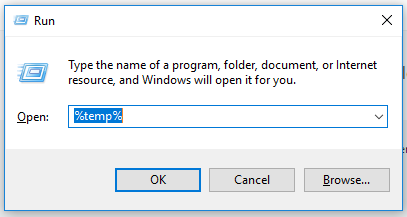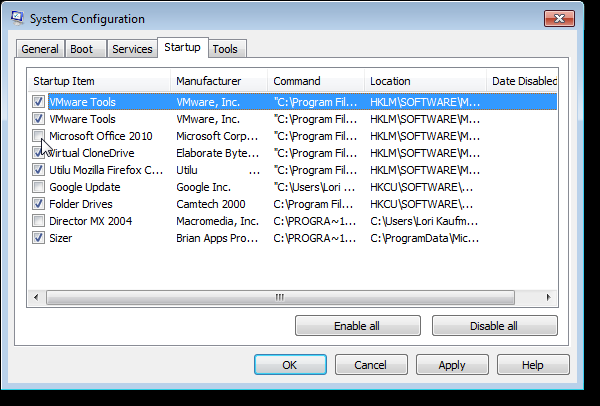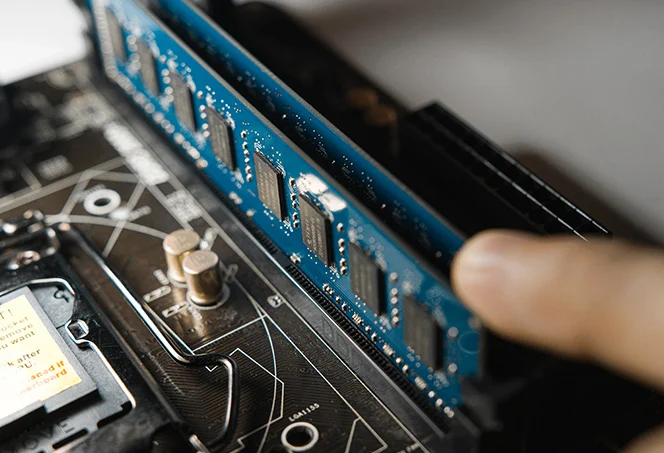Is your computer crawling at a snail’s pace? Are you tired of waiting for programs to load and files to open? Don’t worry; you’re not alone. Many computer users experience frustration due to slow performance. The good news is that there are simple steps you can take to speed up your slow computer. In this article, we will guide you through five easy steps to optimize your computer’s performance and get it running smoothly again.
1. Introduction
When your computer slows down, it can be a frustrating experience. However, before you consider buying a new computer, try these simple steps to improve its speed and performance. By following these recommendations, you can potentially avoid spending unnecessary money and extend the lifespan of your current computer.
2. Step 1: Clean Up Your System
A cluttered system can significantly impact your computer’s speed. Start by removing unnecessary programs that you no longer use. Uninstalling these programs will free up valuable disk space and reduce the strain on your system.

Additionally, delete temporary files that accumulate over time and clear your recycle bin regularly. These actions can provide an immediate boost to your computer’s performance.
2.1 Remove Unnecessary Programs
Go through your installed programs and uninstall any applications that are no longer needed. To do this, navigate to the Control Panel on Windows or the Applications folder on macOS.
Identify the programs you rarely use or don’t recognize and safely uninstall them.
2.2 Delete Temporary Files
Temporary files, such as cache and temporary internet files, can take up a significant amount of disk space over time. Use disk cleanup tools or third-party software to remove these files regularly. By doing so, you can enhance your computer’s performance and create more room for important files.
2.3 Clear Your Recycle Bin

When you delete files on your computer, they are moved to the recycle bin. However, they still take up space until you empty the bin. Regularly emptying your recycle bin can recover valuable disk space and contribute to a faster computer.
3. Step 2: Update Your Operating System
Outdated operating systems can be a leading cause of slow computer performance. Both Windows and macOS release updates that include bug fixes, security patches, and performance enhancements. Keeping your operating system up to date ensures that your computer runs smoothly and efficiently.
3.1 Windows OS
For Windows users, click on the Start button, go to Settings, and select “Update & Security.” Check for updates and install any available updates. Restart your computer if necessary to complete the installation process.
3.2 macOS
If you’re using a Mac, click on the Apple menu, go to System Preferences, and select “Software Update.” Check for updates and install them as they become available. Restart your Mac if prompted to finalize the update process.
4. Step 3: Manage Startup Programs

When you turn on your computer, some programs automatically launch in the background. These startup programs can consume valuable system resources and slow down your computer’s boot time. Managing them effectively can significantly improve your computer’s performance.
4.1 Disable Unnecessary Startup Programs
On Windows, open the Task Manager by pressing Ctrl + Shift + Esc, then navigate to the “Startup” tab. Disable any programs that you don’t need to launch at startup.
On macOS, go to System Preferences, select “Users & Groups,” and click on your username. Navigate to the “Login Items” tab and uncheck any unnecessary programs.
4.2 Use Task Manager (Windows) or Activity Monitor (macOS)
Task Manager in Windows and Activity Monitor in macOS provide valuable insights into the performance of your computer. Use these tools to identify resource-hungry processes and close them if necessary. By managing resource usage, you can free up system resources for essential tasks and improve overall speed.
5. Step 4: Upgrade Your Hardware
If your computer is still sluggish after following the previous steps, it might be time to consider a hardware upgrade. Upgrading certain components can provide a significant performance boost.
5.1 Add More RAM

Increasing your computer’s RAM (Random Access Memory) can greatly improve its speed and responsiveness.
Check your computer’s specifications and determine if it can support additional RAM. If so, consider adding more memory to speed up your computer’s performance.
5.2 Replace Your Hard Drive with an SSD

One of the most effective hardware upgrades is replacing your traditional hard drive with a solid-state drive (SSD). SSDs offer faster data access speeds, quicker boot times, and improved overall performance. While this upgrade may require some technical knowledge, the results can be well worth it.
6. Step 5: Optimize Your Web Browser
If your computer feels slow specifically when browsing the internet, optimizing your web browser can make a noticeable difference.
6.1 Clear Browser Cache
Over time, your browser’s cache can accumulate a significant amount of data, including temporary files, images, and website data. Clearing your browser cache regularly can help eliminate unnecessary clutter and improve browsing speed. Consult your browser’s settings to find the option to clear cache data.
6.2 Disable or Remove Browser Extensions
Browser extensions can provide additional functionality but can also consume system resources. Disable or remove any unnecessary or unused extensions to free up resources and improve browsing speed.
6.3 Update Your Browser
Ensure that your web browser is up to date with the latest version. Browser updates often include performance improvements and security fixes that can contribute to a faster browsing experience.
7. Conclusion
By following these five easy steps, you can significantly speed up your slow computer. Start by cleaning up your system, updating your operating system, managing startup programs, considering hardware upgrades, and optimizing your web browser. Remember to perform regular maintenance to keep your computer running smoothly and efficiently.
8. FAQs
8.1 What causes a computer to slow down?
Several factors can contribute to a slow computer, including excessive background processes, lack of system maintenance, insufficient RAM, and outdated hardware or software.
8.2 How often should I clean up my computer?
Regularly cleaning up your computer is recommended to maintain optimal performance. Aim to clean up your system every few months or whenever you notice a significant decrease in performance.
8.3 Can I speed up my computer without upgrading the hardware?
Yes, there are various software-based optimizations and maintenance tasks that can speed up your computer without the need for hardware upgrades. Cleaning up your system, managing startup programs, and optimizing your software settings can all help improve performance.
8.4 What are the benefits of using an SSD?
Solid-state drives (SSDs) offer several advantages over traditional hard drives, including faster boot times, quicker file access, and improved overall system responsiveness. They are also more durable and less prone to mechanical failures.
8.5 Is it safe to delete temporary files?
Yes, it is generally safe to delete temporary files. Temporary files are created by various programs and are meant to be temporary in nature. Deleting them frees up disk space and can help improve performance. However, ensure that you are deleting temporary files from trusted sources and not critical system files.



